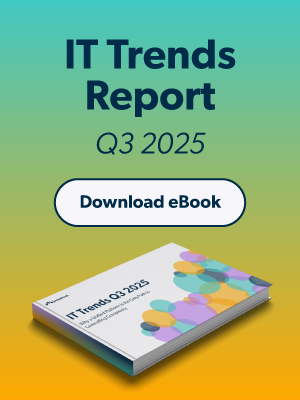Updated on September 5, 2025
Security Information and Event Management (SIEM) systems are essential tools for protecting modern networks. While these systems contain multiple components working together, one stands above the rest as the most critical for effective endpoint monitoring. The correlation engine transforms raw data streams into actionable security intelligence, making it the heartbeat of any successful SIEM deployment.
Think of your network’s security like a detective investigating a complex case. Individual log entries are like scattered clues at a crime scene. Without someone connecting these clues, they remain meaningless fragments. The correlation engine acts as your digital detective, linking seemingly unrelated events to reveal the full picture of potential threats.
Understanding SIEM Core Components
A SIEM system combines Security Information Management (SIM) and Security Event Management (SEM) capabilities. These systems collect, normalize, and analyze security data from across your network infrastructure.
Network endpoints include any device connected to your network—laptops, servers, mobile phones, IoT devices, and more. Each generates continuous streams of log data that require processing and analysis.
Log aggregation collects this data from various sources like firewalls, applications, and endpoint detection tools into a central repository. However, aggregation alone provides limited value without intelligent analysis.
The alerting system notifies security teams when predefined conditions are met. But alerts without context often create more noise than insight.
The Correlation Engine: Analytics Powerhouse
The correlation engine serves as the analytical brain of your SIEM system. This component transforms your SIEM from a simple log database into an intelligent security platform capable of identifying sophisticated threats.
Normalization Process
The engine first standardizes disparate log formats from different vendors. Windows Event Logs, Linux syslogs, and endpoint detection response (EDR) alerts all speak different languages. The correlation engine acts as a universal translator, converting these varied formats into a standardized structure for analysis.
This normalization process enables the engine to compare and correlate events from different systems effectively. Without standardization, critical relationships between events would remain hidden.
Rule-Based Analysis
The correlation engine maintains a comprehensive library of predefined rules designed to identify known attack patterns. These rules define relationships between different types of events and specify conditions that trigger alerts.
For example, the engine can correlate multiple failed login attempts across different endpoints within a specific timeframe. When this pattern matches a brute-force attack rule, the system generates a high-priority alert for security analysts.
Behavioral Analysis
Advanced correlation engines incorporate machine learning to establish baseline behaviors for users, devices, and network segments. The system continuously learns normal patterns and flags deviations as potential anomalies.
Consider an employee account that typically accesses systems only during business hours from a specific geographic location. If this account suddenly authenticates from another continent at 3 AM, the correlation engine recognizes this anomaly and generates an alert.
Why Correlation Trumps Other Components
Contextual Intelligence
The correlation engine provides essential context that transforms individual low-severity events into high-priority incidents. A single failed login attempt represents normal user error. However, when correlated with similar attempts across multiple systems, it becomes evidence of a coordinated attack.
Without correlation, security analysts face an impossible task of manually reviewing millions of log entries to identify threats. The correlation engine automates this process, surfacing only the most critical alerts that require human attention.
Multi-Stage Attack Detection
Modern cyber attacks rarely occur as single events. Advanced Persistent Threats (APTs) involve multiple stages executed over extended periods. These attacks might begin with reconnaissance, progress through initial compromise, establish persistence, and eventually achieve their objectives through lateral movement.
The correlation engine excels at connecting these seemingly benign events across different systems and timeframes. It can link an unusual network scan to a subsequent authentication attempt, followed by unusual file access patterns, revealing a coordinated attack that individual events would never expose.
Operational Efficiency
Raw log aggregation without correlation creates information overload. Security teams receive thousands of alerts daily, leading to alert fatigue and potentially missed threats. The correlation engine reduces noise by combining related events into unified incidents, allowing analysts to focus on genuine threats rather than individual symptoms.
Essential Correlation Engine Features
Real-Time Event Processing
The correlation engine must analyze data streams as they arrive to provide immediate threat detection. Delayed analysis allows attacks to progress unchecked, potentially causing significant damage before detection.
Real-time processing requires substantial computational resources and optimized algorithms to handle high-volume data streams without introducing latency.
Customizable Rule Logic
Security teams need the ability to create custom correlation rules based on their specific threat models and network configurations. Generic rules provide baseline protection, but tailored rules address organization-specific risks and attack vectors.
Custom rule creation requires intuitive interfaces that allow security professionals to define complex logical relationships without extensive programming knowledge.
Comprehensive Integration Capabilities
The correlation engine must ingest data from diverse security tools including endpoint protection platforms, network monitoring systems, identity management solutions, and cloud security services.
Broad integration capabilities ensure comprehensive visibility across the entire security stack. Limited integration creates blind spots that attackers can exploit.
Implementation Challenges and Solutions
Rule Tuning and Optimization
Correlation engines require continuous tuning to balance detection effectiveness with false positive rates. Overly sensitive rules generate excessive alerts, while insufficiently sensitive rules miss genuine threats.
Security teams must regularly review alert patterns, adjust rule parameters, and retire outdated rules. This ongoing maintenance requires dedicated resources and expertise.
Scaling for Data Volume
Modern networks generate enormous volumes of log data. Thousands of endpoints can produce millions of events daily. The correlation engine must scale to handle this volume without performance degradation.
Scaling solutions include distributed processing architectures, efficient data storage systems, and intelligent data filtering to focus analysis on the most relevant events.
Data Source Configuration
Misconfigured data sources create gaps in visibility that can blind the correlation engine to threats. Incomplete data feeds prevent accurate correlation and may allow attacks to proceed undetected.
Proper configuration requires understanding each data source’s format, frequency, and relevance to security monitoring objectives. Regular audits ensure continued data quality and completeness.






